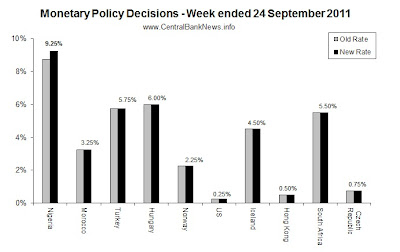By MoneyMorning.com.au
Saw an article on the Sydney Morning Herald website this morning blaming Baby Boomers for the state of the economy… ‘Greed of boomers led us to a total bust’ it said.
We couldn’t believe our eyes…
Most… most… of the ‘boomers’ we know have worked hard all their lives, lived within their means and tried to pay off the debts they did accumulate (like house loans) as fast as they could.
Of course, credit cards were introduced in 1974… And, apparently – according to creditcards.com – Aussie Baby Boomers hold $150 billion in debt.
But does that mean, because Baby Boomers used the credit cards made available to them, that they’re the root of all the problems with today’s economy?
In our view, it’s the rise of the Welfare State and Easy Credit that have led us to where we are now.
But rather than face facts and accept this is the cause of the problem, the powers that be call for more welfare and credit…
That makes it hard for Aussie firms to invest in their business. The welfare state takes from the productive economy to support non-production. And easy credit distorts the economy by allocating resources away from capital spending and towards immediate consumer spending instead.
It’s partly why former Commonwealth Bank CEO and Future Fund chairman David Murray warns of Dutch Disease. This is where an economy relies too much on the resources sector to the harm of all others… except for the consumer sector.
In the short-term it provides a boost to the economy. Until all the credit’s used up. But in the long term it harms the economy and Aussie businesses. And eventually, even the consumer sector feels the pinch too…
And that’s bad news for stock prices. But, if you’re a short seller, it opens a window of opportunity for you in stocks that are on the way down.
The Most Short-Sold Stocks on the ASX Last Week By % Of Issued Capital Reported as Short Sold…
- Challenger Limited (ASX:CGF)
- Lynas Corporation Limited (ASX:LYC)
- Betashares Gold Bullion ETF (ASX:QAU)
- Foster’s Group Limited (ASX:FGL)
- Cochlear Limited (ASX:COH)
- Galileo Japan Trust (ASX:GJT)
- Vanguard US Total Market Shares (ASX:VTS)
- Billabong International (ASX:BBG)
- Paladin Energy (ASX:PDN)
- Atlas Iron Group (ASX:AGO)
Aaron Tyrrell
Editor, Money Morning
Related Articles
Three Gold Bubble Signals You Should Ignore
Three Steps to Wealth: Leverage, Volatility and Risk
What China’s Secret Gold Cache Means for Aussie Gold Stocks
From the Archives…
Australia: The World’s Investing Casino
2011-09-23 – Kris Sayce
Why China’s Hidden Bad Debt is Bad News for Aussie Stocks
2011-09-22 – Kris Sayce
Contrarian Investors: Add This Sector to Your Buy List
2011-09-21 – Dr. Alex Cowie
Is This the Last Surprise in Bernanke’s Tool Box?
2011-09-20 – Kris Sayce
How to Maximise Your Returns in a Volatile Market
2011-09-19 – Kris Sayce
For editorial enquiries and feedback, email moneymorning@moneymorning.com.au


































